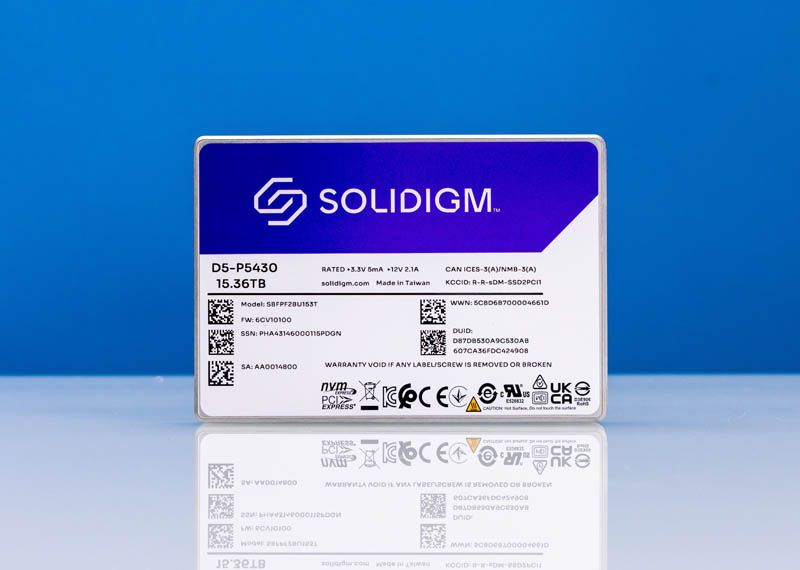Solidigm D5-P5430 PCIe Gen4 NVMe SSD Launched Sporting New Branding
Solidigm has a new NVMe SSD, designed to displace hard drives from even more data center and edge applications. With up to 15.36TB today, and over 30TB in the second half of 2023, these new QLC-based drives are high capacity, with features to compete on a $/TB basis. What is fun for folks who follow the space, like the consumer drives (e.g. Solidigm P44 Pro) the new line of data center drives has Solidigm purple branding instead of traditional Intel markings.
Solidigm D5-P5430 Launched Sporting New Branding
Something that is fun with the new line is that it fits between higher-end drives designed for performance and lower-end QLC drives designed for write infrequently, read often (we are going to call this WIRO access.)
Something that Solidigm is trying to push, and it is a bit distorted by capacity, is the idea that its new drives have lower endurance. Because the drives are larger in capacity, they have lower DWPD ratings, but higher or competitive Petabytes Written (PBW) ratings. This makes sense since larger drives go from only being caching drives to becoming primary storage.
Here are the key specs. Perhaps one of the most interesting beyond the U.2, E3.S, and E1.S form factors and capacities and performance, is that this supports OCP 2.0 Log pages which is a feature we are seeing more new drives adopt. This allows folks to build things like fleet-wide predictive failure mechanisms.
On performance, Solidigm has some competitive numbers. Since a number of these drives have, or will have segment relevant updates soon, we are just going to show them. I did run some basic performance tests with the drive Solidigm provided, and my results were roughly in line with what they list here.
Here are Solidigm’s real-world workload numbers. These are relative performance numbers but in the above the Micron 7450 Pro was used as the 1.0 baseline, whereas in the one below the Solidigm D5-P5430 is the baseline. Solidigm is getting a lot of this performance by using a 16-channel controller while many TLC drives in this segment use 8-channel controllers.
Solidigm also has examples of a TLC array with 15.36TB SSDs versus the new D5-P5430 using 7TB capacity. The TLC array should have better object storage performance due to having more drives for the 7TB, but the 30.72TB array can have lower costs.
Solidigm did the same looking at a hybrid array with 18TB hard drives and TLC SSDs versus doing all flash.
It also talked about how it protects data from Silent Data Corruption and it believes it is the best in the business on this. It is not hard to imagine who “Supplier S”, “Supplier M, and so forth are.
We have these drives in the lab and are testing the 15.36TB U.2 model. Since we have a lot of SSD news today, we are going to do the SSD review at a later date.
This is the first Solidigm data center drive we have seen with non-ES marking, and Solidigm Purple instead of Intel logos.
While the branding is now purple, the exterior of the drive still reminds me of the older Intel designs.
Here is the U.2 connector side.
The bottom is essentially featureless; some of the Intel drives from the past had ridges and additional surface area to aid in heat dissipation, while the P5430 is simply flat.
Still, it is fun to see the new branding in a real drive.
Final Words
The 15.36TB U.2 drives are out now. Some of the other SSD form factors are awaiting certifications and such but will be out soon. Solidigm expects to have the entire line out in the second half of 2023.
Stay tuned for the review of these new SSDs coming in the next few weeks.
Source: ServeTheHome


